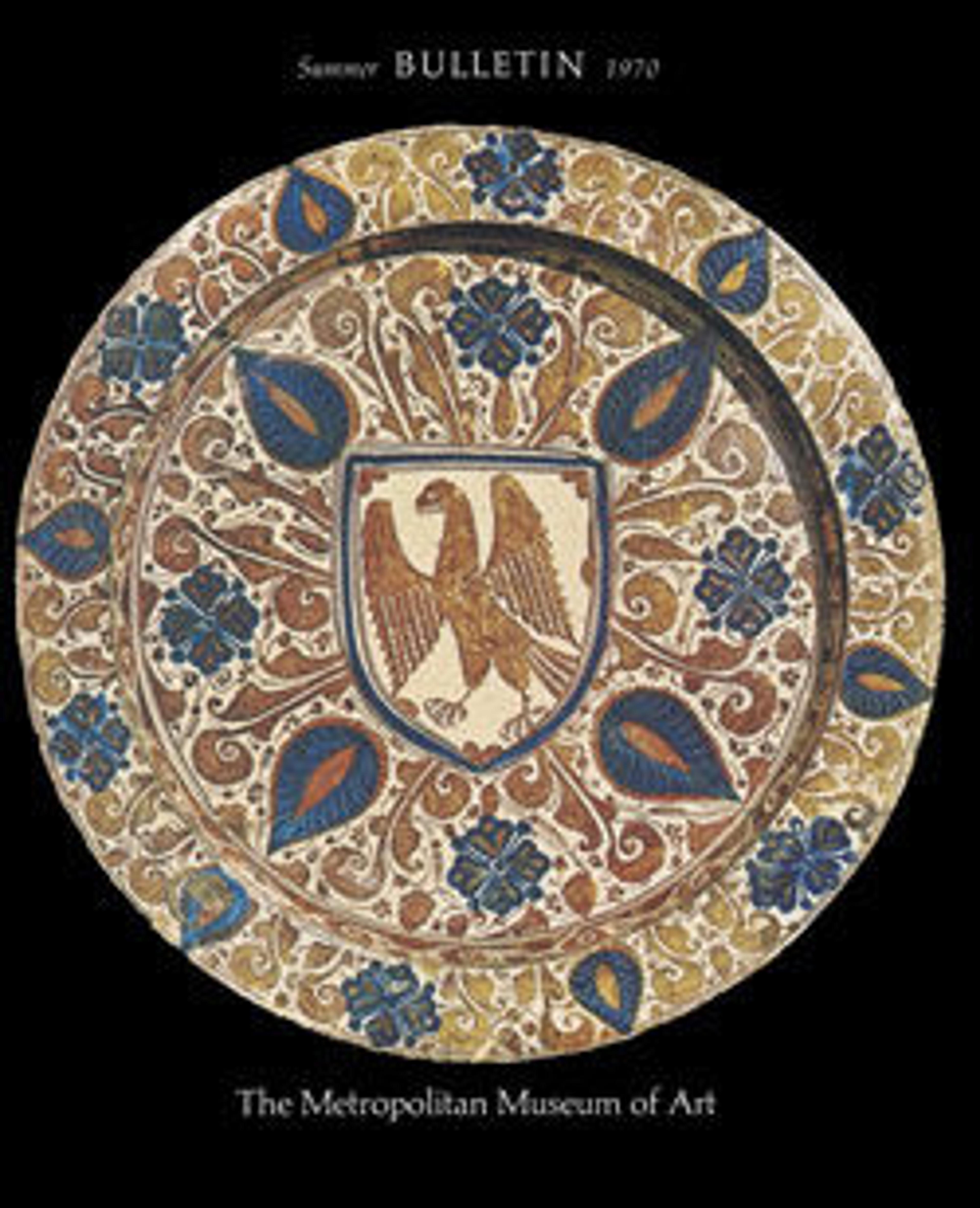Pharmacy Jar
Lusterware is the term used to describe a glazed earthenware ceramic decorated with an iridescent finish. The technique for creating this finish was developed in the ninth century under the rule of the Abbasid Caliphate in present-day Iraq. The medium involves a technique that is difficult to master, but if completed successfully, the surfaces of the ceramic objects display an iridescent sheen which is achieved through multiple firings and the application of a metal-based pigment (including silver, copper, tin, or a combination of these). Lusterware manufacture is still difficult to understand from a technical perspective because for generations, production was kept secret to protect workshop practices from being replicated by competitors. Therefore, pigment formulas and trade techniques were passed down from master to pupil and rarely recorded.
Knowledge of the technique for creating lusterware made its way to the Iberian Peninsula by the twelfth century, when most of the region was still under Islamic rule. By the 1400s, the Iberian center of lusterware production was in Manises, near the city of Valencia. Previously a Muslim taifa, or principality, the Kingdom of Valencia was conquered in the thirteenth century by James I for the Crown of Aragon, and it was here that Christians and Muslim potters worked, sometimes together, for a diverse clientele with a voracious appetite for high quality lustered wares.
Knowledge of the technique for creating lusterware made its way to the Iberian Peninsula by the twelfth century, when most of the region was still under Islamic rule. By the 1400s, the Iberian center of lusterware production was in Manises, near the city of Valencia. Previously a Muslim taifa, or principality, the Kingdom of Valencia was conquered in the thirteenth century by James I for the Crown of Aragon, and it was here that Christians and Muslim potters worked, sometimes together, for a diverse clientele with a voracious appetite for high quality lustered wares.
Artwork Details
- Title:Pharmacy Jar
- Date:1435–65
- Geography:Made in Manises, Valencia, Spain
- Culture:Spanish
- Medium:Tin-glazed earthenware
- Dimensions:Overall: 11 in. (27.9 cm)
- Classification:Ceramics
- Credit Line:The Cloisters Collection, 1956
- Object Number:56.171.94
- Curatorial Department: Medieval Art and The Cloisters
More Artwork
Research Resources
The Met provides unparalleled resources for research and welcomes an international community of students and scholars. The Met's Open Access API is where creators and researchers can connect to the The Met collection. Open Access data and public domain images are available for unrestricted commercial and noncommercial use without permission or fee.
To request images under copyright and other restrictions, please use this Image Request form.
Feedback
We continue to research and examine historical and cultural context for objects in The Met collection. If you have comments or questions about this object record, please contact us using the form below. The Museum looks forward to receiving your comments.
